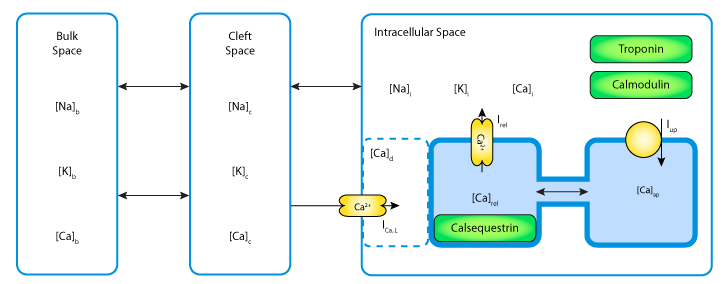Nygren, Fiset, Firek, Clark, Lindblad, Clark, Giles, 1998
Model Status
This model has been curated and unit checked and is known to run and produce the correct output in PCEnv and COR.
Model Structure
Over the past decade, extensive voltage-clamp and action potential data from human atrial myocytes have been published from a number of laboratories. Based on these experimental data, A. Nygren, C. Fiset, L. Firek, J.W. Clark, D.S. Lindblad, R.B. Clark and W.R. Giles have published a mathematical model of the electrophysiological responses of a representative human atrial cell. Their model is sufficiently accurate to have predictive capabilities for selected aspects of the electrophysiological responses in the human atrium. Emphasis has been placed on the functional roles of the K+ currents during repolarisation.
The mathematical model is based on the classical formulation of Hodgkin and Huxley (see The Hodgkin-Huxley Squid Axon Model, 1952). Ionic currents through the sarcolemma are coupled with a fluid compartment model (see the figure below), which accounts for changes in ionic concentrations in the cytoplasm and sarcoplasmic reticulum.
The complete original paper reference is cited below:
Mathematical Model of an Adult Human Atrial Cell: The Role of K+ Currents in Repolarization, A Nygren, C. Fiset, L. Firek, J.W. Clark, D.S. Lindblad, R.B. Clark and W.R. Giles, 1998, Circulation Research , 82, 63-81. (Full text and PDF versions of the article are available for Journal Members on the Circulation Research website.) PubMed ID: 9440706
 |
| A fluid compartment model of the human atrial cell, including intracellular, cleft and extracellular spaces. |

